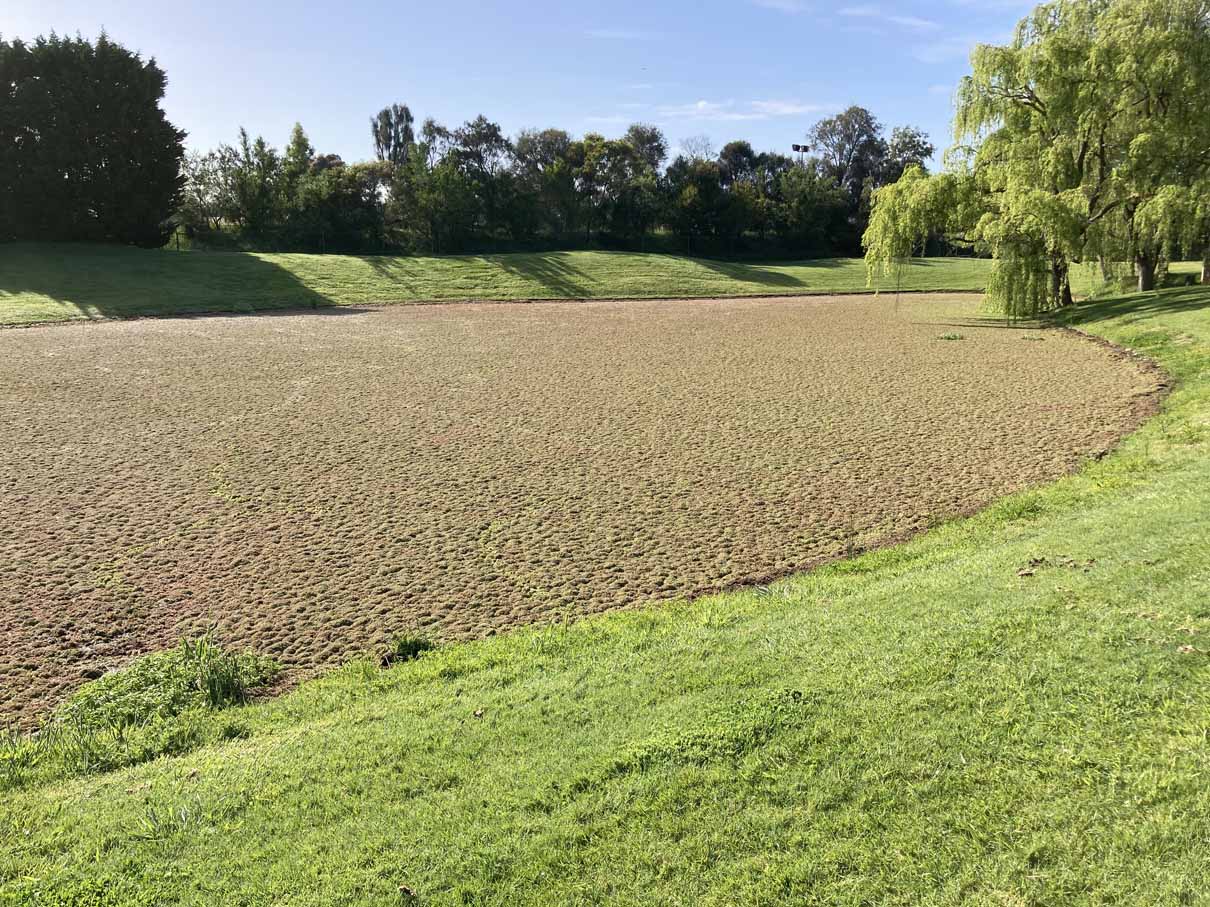
The 4 Stages of Azolla: Identification and Treatment Guide
Q. Our dam has been overtaken by Azolla, can you recommend how we treat this and prevent it from coming back?
ANSWER:
Azolla, a free-floating aquatic fern, can transform your water body into a weed-infested nightmare if left unchecked. This seemingly innocuous plant, known scientifically as Azolla filiculoides, is a versatile species that can rapidly take over water surfaces. In this Q&A, we will explore the four growth stages of Azolla, how to identify them, and the most effective treatments to keep your aquatic oasis in check
- Stage 1: Primary Growth – The Beginning – In this initial stage, Azolla plants are scattered across the water’s surface flat and there is an abundance of free water. During this phase, Azolla covers around 0-30% of the water body.
- Stage 2: Secondary Growth – A Splash of Colour – As Azolla continues to thrive, it becomes more noticeable. The water’s surface will display hues of red, green, or a combination of both. At this stage, Azolla covers approximately 30-60% of the water body.
- Stage 3: Tertiary Growth – The Total Takeover – By this stage, Azolla has infested the water body, leaving no visible water. Its colours, red, green, or a mix, dominate the surface. Azolla’s presence has reached 60-100%,
- Stage 4: Multilayered Growth – The Ultimate Challenge – In the fourth and final stage, Azolla has completely covered the water body. Multilayered weed mats form, with ridge-like thickenings as layers build up.
Treatment Strategies for Azolla Management
Now that we’ve identified the growth stages let’s look at treatment options for effective Azolla control:
- Primary and Secondary Growth Stages: AQ200 Herbicide + Wetting Agent, Orange Oil Natural Treatment or physically remove Azolla using an Azolla Skimmer. These are essential for successful weed control.
- Tertiary Growth Stages: AQ200 Herbicide + Wetting Agent: This combination or physical removal using an Azolla Skimmer is effective in managing mature Azolla populations.
- Multilayered Growth Stages: AQ200 Herbicide + Wetting Agent: Apply this treatment or use an Azolla Skimmer for physical removal. Implementing these will help you regain control over your water body.
How to Apply Treatments:
- AQ200 + Wetting Agent: For all stages. For 100% coverage, consider thinning out Azolla before applying the herbicide. Check hidden areas beneath rocks, lily pads, and reeds for any remaining plants, and spot treat them for optimal results.
- Orange Oil Treatment: For Primary and Secondary stages. Partially remove sections of the infestation to create space for the treated matter to sink. Apply an extra 20% of the product for saturation. Multiple light applications over several days give the best results.
- Azolla Skimmer Use: Azolla Skimmer: For all stages. This method works best when used alongside spray treatments, enhancing your weed control efforts.
Controlling Phosphorus for Water Health
Azolla can thrive in nutrient-rich waters, particularly those with abundant phosphorus. Understanding how phosphorus enters your water is crucial for prevention:
Sources of Phosphorus:
Fertilizers, runoff, erosion, sewage, organic matter decomposition, natural weathering, and bushfires.
Managing Phosphorus:
- Limit runoff: Minimize runoff by implementing proper drainage systems for improved water quality.
- Reduce fertilizer use: Use fertilizers sparingly and according to recommended guidelines, reducing the risk of excessive phosphorus in your water body.
- Prevent topsoil erosion: Implement erosion control measures to keep topsoil from entering the water, preserving its quality.
- Manure handling: Properly handle and manage animal manure to prevent phosphorus runoff, ensuring the health of your water body.
- Soil conservation practices: Adopt soil conservation practices to protect water quality, controlling phosphorus levels effectively.
- Wetland and riparian buffer restoration: Restore wetlands and create riparian buffers to naturally filter phosphorus from the water, promoting a balanced aquatic ecosystem.
Removing Phosphorus for Water Body Health




